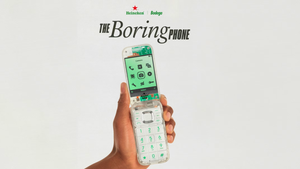Verizon and others at TelcoTV praise the benefits of FTTH
October 24, 2007

ATLANTA -- TelcoTV 2007 -- Service providers at TelcoTV endorsed fiber to the home (FTTH) as the best access medium for IPTV, but said it's the services that will really set them apart from cable and satellite competitors.
In a panel session this morning, representatives of Verizon Communications Inc. (NYSE: VZ), Optical Entertainment Network subsidiary Fision, and GVTC , said FTTH is necessary to future-proof their networks in the wake of growing bandwidth needs driven by IPTV and other services.
Tushar Saxena, Verizon's director of home networking technologies, said his company "could have gone fiber-to-the-node with VDSL," but didn't believe that approach would provide enough capacity to deliver services for the next 15 to 20 years, let alone the next five years.
Allen Easty, CTO of Fision, said his company's move to FTTH came out of experience. "I spent five years of my life trying to shove video down copper," he said.
And George O'Neal, VP of network services at Guadalupe Valley, said the decision to roll fiber to the home was an economic one -- simply, the price of FTTH was a better value than copper.
Not represented on the panel was AT&T Inc. (NYSE: T), which is betting that a fiber-to-the-node architecture -- using DSL for the final span to reach homes -- is good enough, even for delivering high-definition TV. (See AT&T Shows Off IPTV Tricks.)
The real value of FTTH, the panelists said, will come from the services it enables.
"We needed a better product to justify FTTH and FTTx," Fision's Easty said. "By itself, broadband Internet is still a low-margin business. But we can provide a better TV service, and that's a 40 percent margin business."
Services that Verizon is considering include pulling information off of the Internet with IP set-top boxes, or using those set-tops for access to music or pictures from a PC, Verizon's Saxena said.
That vision is not without its problems, as there's still a long way to go in terms of interweaving home networks and consumer electronic devices. "Plug-and-play within the home is going to be the biggest problem we will face coming soon," said Saxena.
For its part, Verizon is investing a good deal on MOCA and other technologies to bridge the "last 100 feet" of its connection to the end user, when services transported over fiber are typically switched over to coax, Saxena said.
While most telcos that have rolled out FTTH believe their access networks are now "future proof," they now see the need for excess capacity moving deeper into the network.
"We believe fiber to the home is future proof," Guadalupe's O'Neal said. "But now we're looking at backhaul. We can't continue at our current rate forever."
— Ryan Lawler, Reporter, Light Reading
You May Also Like








